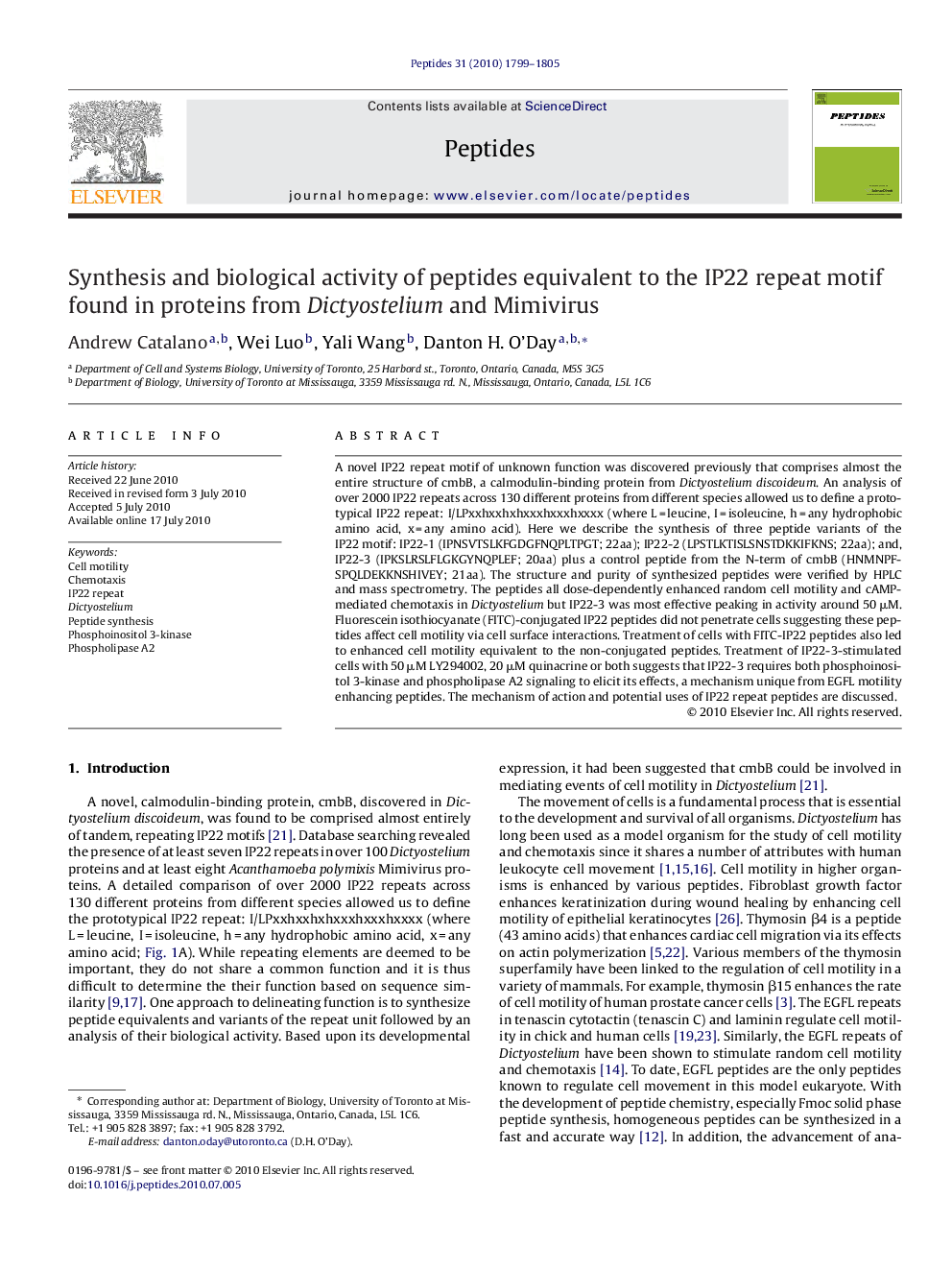| Article ID | Journal | Published Year | Pages | File Type |
|---|---|---|---|---|
| 2006367 | Peptides | 2010 | 7 Pages |
A novel IP22 repeat motif of unknown function was discovered previously that comprises almost the entire structure of cmbB, a calmodulin-binding protein from Dictyostelium discoideum. An analysis of over 2000 IP22 repeats across 130 different proteins from different species allowed us to define a prototypical IP22 repeat: I/LPxxhxxhxhxxxhxxxhxxxx (where L = leucine, I = isoleucine, h = any hydrophobic amino acid, x = any amino acid). Here we describe the synthesis of three peptide variants of the IP22 motif: IP22-1 (IPNSVTSLKFGDGFNQPLTPGT; 22aa); IP22-2 (LPSTLKTISLSNSTDKKIFKNS; 22aa); and, IP22-3 (IPKSLRSLFLGKGYNQPLEF; 20aa) plus a control peptide from the N-term of cmbB (HNMNPFSPQLDEKKNSHIVEY; 21aa). The structure and purity of synthesized peptides were verified by HPLC and mass spectrometry. The peptides all dose-dependently enhanced random cell motility and cAMP-mediated chemotaxis in Dictyostelium but IP22-3 was most effective peaking in activity around 50 μM. Fluorescein isothiocyanate (FITC)-conjugated IP22 peptides did not penetrate cells suggesting these peptides affect cell motility via cell surface interactions. Treatment of cells with FITC-IP22 peptides also led to enhanced cell motility equivalent to the non-conjugated peptides. Treatment of IP22-3-stimulated cells with 50 μM LY294002, 20 μM quinacrine or both suggests that IP22-3 requires both phosphoinositol 3-kinase and phospholipase A2 signaling to elicit its effects, a mechanism unique from EGFL motility enhancing peptides. The mechanism of action and potential uses of IP22 repeat peptides are discussed.
Research highlights▶ Synthesis of variants a prototypical IP22 repeat: I/LPxxhxxhxhxxxhxxxhxxxx (where L = leucine, I = isoleucine, h = any hydrophobic amino acid, x = any amino acid). ▶ The IP22 peptides all dose-dependently enhanced random cell motility and cAMP-mediated chemotaxis in Dictyostelium. ▶ IP22-3 (IPKSLRSLFLGKGYNQPLEF) was most effective peaking in activity around 50 μM. ▶ FITC-conjugated IP22 peptides did not penetrate cells indicating they work via cell surface interactions.. ▶ Treatment of IP22-3-stimulated cells with 50 μM LY294002, 20 μM quinacrine or both suggests that IP22-3 requires both phosphoinositol 3-kinase and phospholipase A2 signaling.
